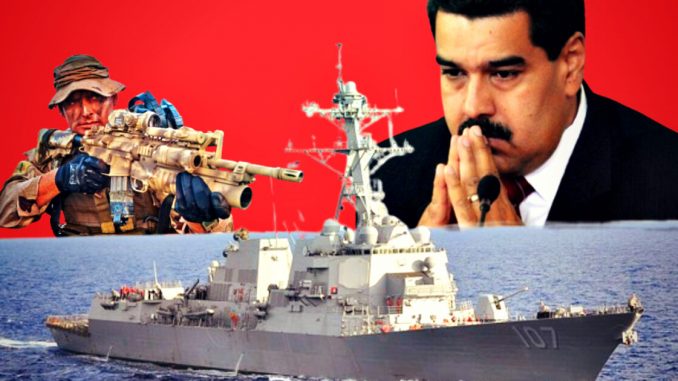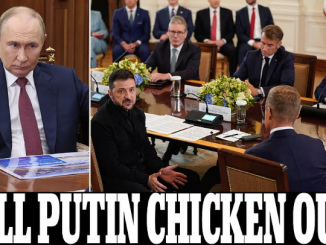
| Published August 19, 2025
U.S. Deploys Warships and 4,000 Troops Near Venezuela to Combat Drug Threats
The United States has significantly increased its military presence near Venezuela, sending three Aegis-guided missile destroyers—the USS Gravely, USS Jason Dunham, and USS Sampson—to the southern Caribbean. Approximately 4,000 U.S. sailors and Marines are involved in this operation, supported by P-8 surveillance planes and at least one attack submarine.
The deployment forms part of a broader U.S. strategy to combat Latin American drug cartels, including Venezuela’s Tren de Aragua, which has been designated a global terrorist organization under U.S. law. Intelligence gathering and targeted strikes, if necessary, are central to the mission, reflecting Washington’s determination to disrupt drug trafficking networks operating in the region.
This move follows a $50 million reward offer for information leading to the arrest of Venezuelan President Nicolás Maduro. In response, Maduro has vowed to defend Venezuela’s sovereignty, labeling the U.S. threat as “outlandish” and a sign of a “declining empire.”
The deployment underscores the growing tension between the U.S. and Venezuela, with potential ripple effects for regional geopolitics. Neighboring countries may be drawn into diplomatic pressures, while Venezuela’s international allies, including Russia and China, could increase support for Caracas.
 Implications
Implications
1. Geopolitical Tensions
-
The U.S. deployment is likely to heighten tensions between Washington and Caracas. Maduro has already framed the action as a threat to Venezuelan sovereignty.
-
Neighboring countries in Latin America may be forced to take sides or navigate diplomatic pressure, potentially destabilizing regional politics.
-
Russia and China, which have historically supported Venezuela, may see this as a provocation and could increase military or economic backing to Caracas.
2. Military Signaling
-
Deploying Aegis destroyers, P-8 surveillance planes, and submarines signals that the U.S. is prepared for more than just monitoring—there’s potential for direct action against narco-terror groups.
-
It acts as a warning to other criminal networks in the region, including the Tren de Aragua, signaling that U.S. intelligence and strike capabilities are now focused on them.
3. Drug Trafficking Impact
-
Increased surveillance and naval presence may disrupt smuggling routes used for cocaine and other drugs from Venezuela and neighboring countries.
-
However, criminal organizations are adaptive; they may shift operations to other countries, creating a temporary effect rather than long-term eradication.
4. Domestic Political Implications (U.S.)
-
The deployment may be seen as tough action on Latin American drug threats, appealing to domestic audiences concerned about narcotics inflow.
-
Conversely, critics may argue it risks military escalation and a repeat of previous foreign interventions, raising questions about cost and strategy effectiveness.
5. Economic Considerations
-
Sanctions or military tension could affect Venezuela’s already fragile economy, further complicating regional trade and migration flows.
-
Oil and gas markets could see short-term volatility if conflict or military posturing escalates in the Caribbean.
6. Risk of Escalation
-
Miscalculation could lead to direct military confrontation if Venezuelan forces engage U.S. ships or personnel.
-
Cyber or asymmetric warfare (e.g., drone attacks, sabotage) could become more likely as Venezuela seeks deterrence strategies.
 Overall Takeaway:
Overall Takeaway:
The U.S. deployment of warships and thousands of troops near Venezuela underscores Washington’s determination to combat drug trafficking and narco-terrorism in the region. Yet, it also highlights the delicate balance of power in Latin America, where military posturing carries the risk of escalating geopolitical tensions. While the operation may disrupt criminal networks in the short term, it raises broader questions about sovereignty, regional stability, and the potential for confrontation with Venezuela and its international allies. Ultimately, this move signals that the U.S. is willing to leverage both military might and strategic pressure to pursue its objectives, even as the path forward remains fraught with uncertainty.
SOURCES: THE GATEWAY PUNDIT – US Sends 3 Destroyers, 4,000 Troops to the Coast of Venezuela to Combat ‘Drug Threats’, Days After Offering $50 Million Reward for Maduro’s Arrest
REUTERS – US deploys warships near Venezuela to combat drug threats, sources say
THE STRAITS TIMES – US deploys warships near Venezuela to combat drug threats, sources say





Be the first to comment